Reducing customer effort is a high priority for support teams. As customers we all know the frustration of getting lost in endless email chains, chats, or phone support to resolve a simple issue, or so we thought.
If you want to irritate your customers give them a high effort experience. If you add too much back-and-forth to the interaction, that really contributes to customer frustration.
High effort experiences happen when a customer has to wriggle their way through your support system to get help. They know what they want, but they have a hard time getting their answer.
Customers don’t want this:

They want this:
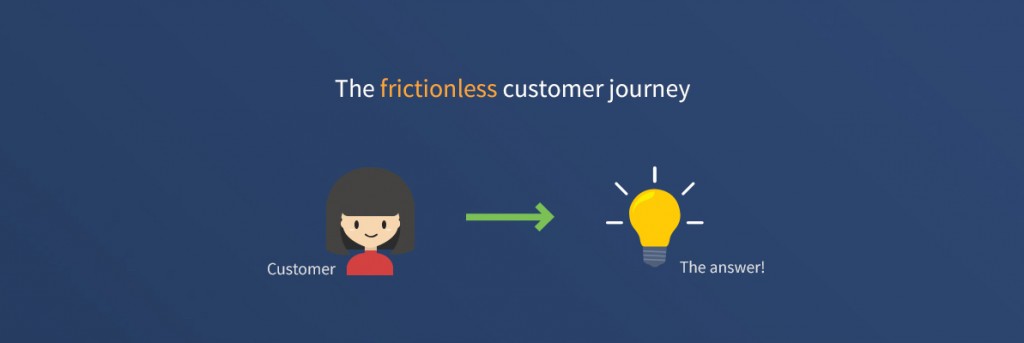
And the stats add up to why this is important:
- 56% of customers reported having to re-explain their issue at least once over the course of the service interaction
- 56% of customers reported moderate to high additional effort to resolve their issue.
- 96% of customers become disloyal to a business because of high-effort experiences.
Customers don’t want to jump through hoops to get their answer. They want to ask the support team for help, get their answer, and be on their way.
What are the rewards for reducing back-and-forth?
As well as providing better support experiences for your customers, reducing back-and-forth looks great on your support metrics dashboard:
- Reducing back-and-forth is a big win for customer experience metrics
- Asking the customer less reduces frustration and increases higher customer satisfaction.
Clarity in communication leads to big business wins
Imagine if your team could ask the customer less simply because they had the whole context of the support journey and could reduce back-and-forth by just one email.
Let’s say your team gets 500 email requests a week and you send an average of three replies to customers. If you can reduce that by one email, that adds up to 26,000 fewer emails sent in a year!

Cutting back-and-forth boosts customer satisfaction
Effective customer service depends on knowing what your customers want first time around.

But doing the job right from the start, can only be achieved when you know exactly what your customers desire in the first place.
Reducing friction and customer back-and-forth should be high on your agenda. If not, you risk frustrating customers and they’ll be quick to take their business elsewhere. But to do this effectively, you need context.
Context tells you what your customers want first time around
As support teams, how many times do we receive requests in our support inbox that look like this:

This type of request is typical in a chat conversation, but it can be seen in email conversations as well.
Although we’re happy to help the customer, deep down we’re frustrated they couldn’t give us more context on what they’ve tried, where they’re at, or what they’re trying to purchase.
So typically as a support agent, you’d dig deeper into the request by asking things like:
Hi Taylor, I’d be happy to help you! Can you let me know the issue you’re struggling with on payment? Then I can help you with check-out as quick possible.
The back-and-forth interaction goes on until you find out what the problem is: Taylor’s inputting the CVV on the back of the card incorrectly.
That seems a lot of work for something so simple.
Is there a way we can reduce back-and-forth?
Navigating these issues is frustrating both for the customer and the support agent. Getting to the bottom of this issue is tricky in traditional help desk software. You’d have to jump from one app to the other to check if Taylor’s attempted purchase is registering in your payment app.
But with journeys and conversations in Kayako, your support agent can see Taylor’s Help Center browsing history, and what she was looking at before she makes contact. Stripe and Shopify integrations tell the agent that Taylor’s payment failed due to an incorrect CVV code – so there’s no need to ask.
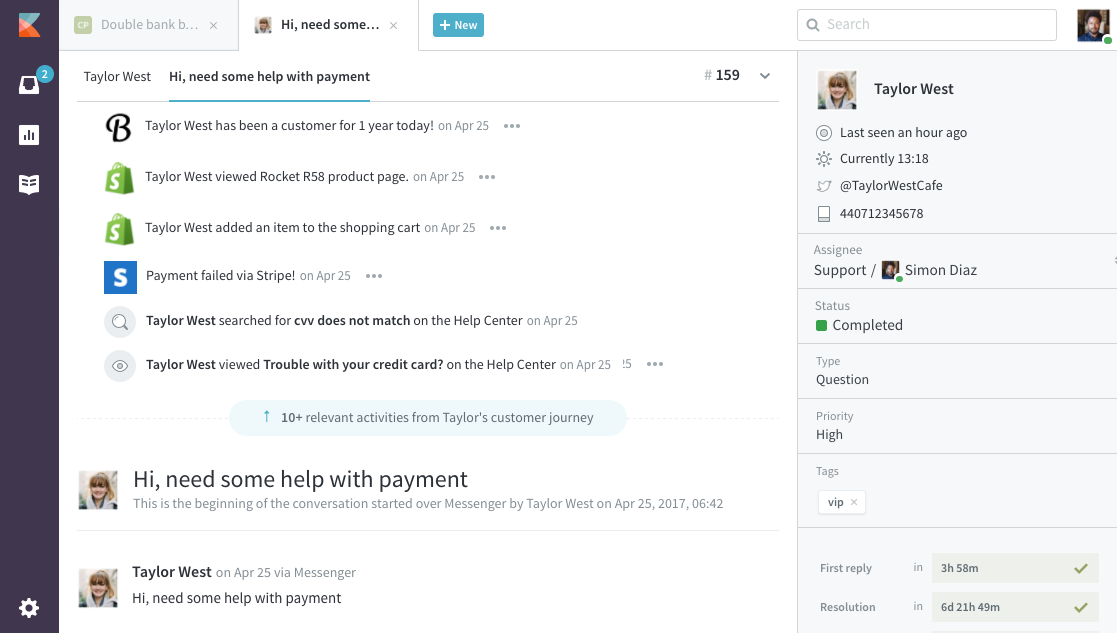
So your response becomes easy:
“Hey! Looks like you’ve hit a snag while checking out. Try again with the last three numbers on the card and it should work.”
As a support agent, this context helps Taylor get exactly what she wants on the first attempt: effortless and personal support with minimal back-and-forth. For you (the support agent) your conversation resolution time just went down, and you’ve created a happy customer.
Context of the support journey helps you ace performance metrics and help more customers. And it allows you to proactively reach out to customers over tricky behind-the-scenes problems to reach a solution quickly.
Proactively reduce email back-and-forth
For subscription businesses, issues with annual or monthly payments crop up a lot in your inbox.
Depending on the size of your team, support might handle billing queries. This can be tough, when you’ve got a ton of other customers to help aside from chasing up customers and getting them to pay.
Dealing with payment issues using a traditional help desk software is cumbersome. You have to weave in and out of different apps to get an idea of why payment might have failed.
Journeys and conversations within Kayako make this a lot easier. No jumping from app to app, because your agents can see everything they need. You’ll have a timeline of recent customer activities and as a support agent you can leave a note for the sales team to add more context for a personalized reply.
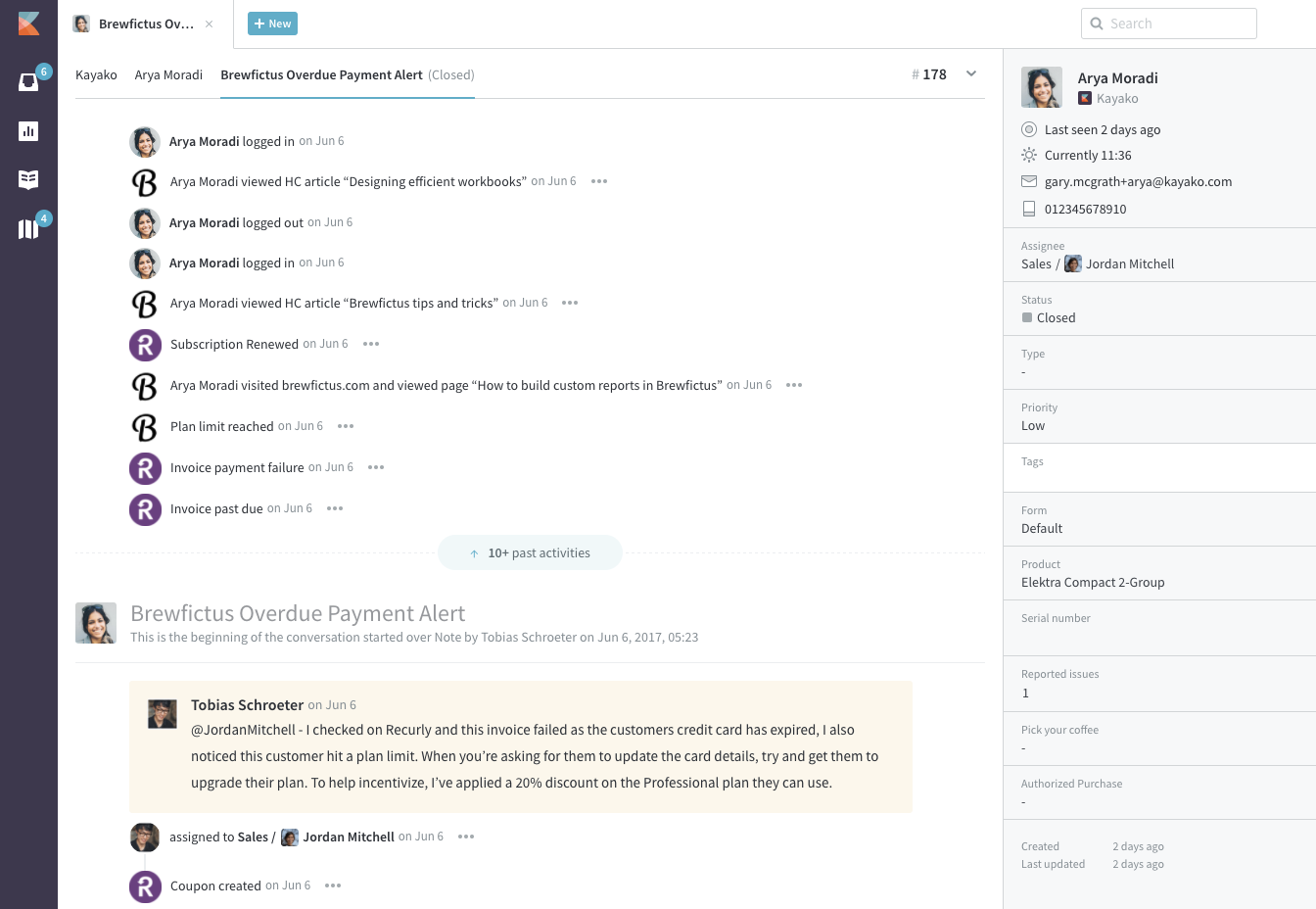
Tobias, our support agent, was able to identify exactly what was wrong without leaving Kayako to chase up other information. It’s all right there for him to pass over to Brewfictus sales agent Jordan Mitchell.
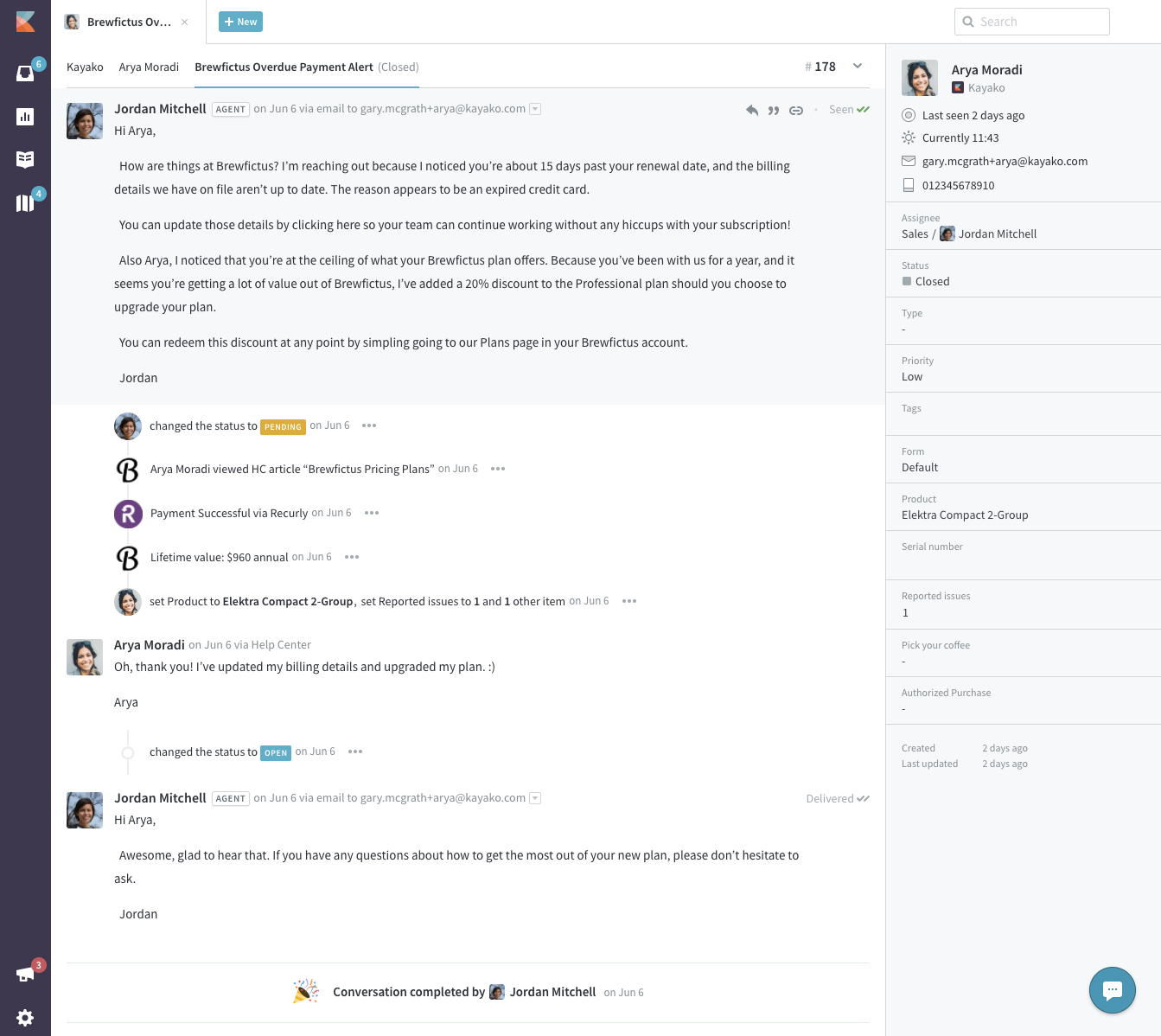
Not only is Jordan able to reach out and proactively suggest the solution to the customer, she can see that Arya has reached her plan’s limit. Jordan is able to check Arya’s customer history (loyal to Brewfictus for a year) and offer her a 20% discount for upgrading her plan. How about that for upselling the customer? It’s not spammy, it’s anticipated and relevant.
And this isn’t hearsay either.
Customers are 32% more likely to reward businesses with repurchases if they can provide proactive support and help them get more out of their product, as reported by CX solutions.
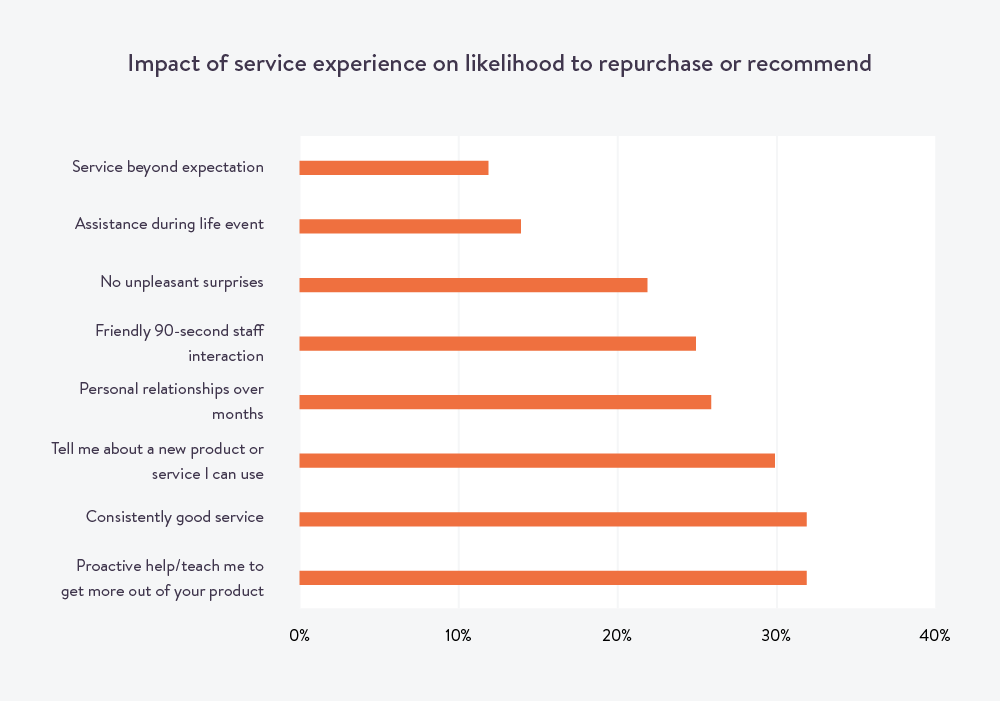
Reducing effort and friction shouldn’t be difficult
Back-and-forth is a frustrating experience for both the customer and the support agent. Getting and giving an answer shouldn’t be so hard!
But you and your team can stop that happening today by using the full context of the customer journey to deliver an effortless, personal, and proactive response. You’ll satisfy your customer and they’ll happily come back and keep using your product or service because they know every time they reach out for help, it’s effortless.
Reduce the back-and-forth and deliver effortless experiences to your customers today using journeys and conversations in Kayako. Sign up for a 14 day free trial.